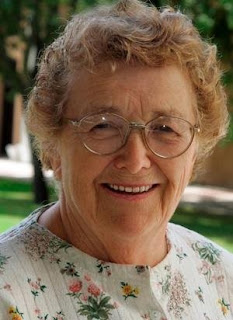The Feast of St. Francis Xavier will be celebrated in Goa, India, this Saturday. That special yearly observance commemorates and honors Xavier and his remarkable Christian missionary activity (see this link). He died 470 years ago, on December 3, 1552.
I have mentioned Xavier several times in my blog posts through the years, the first being on Aug. 15, 2009, my twelfth post on this blog started the previous month.
Francis Xavier was born in 1506 in what is now northern
Spain. When he was 19, he enrolled in Paris University, the world’s premier
university at the time.
While a student in Paris, Xavier became friends with Ignatius
of Loyola, and he became one of the seven original members of the Society of
Jesus (the Jesuits) started by Ignatius on August 15, 1534.*
Xavier became one of the most famous Jesuits of all time in
spite of his early death only eighteen years and a few months after the
formation of that new Roman Catholic order. Further, he became one of the most
effective Catholic missionaries of all time, even though he served only 10½
years.
Xavier’s missionary work began on May 6, 1542, when after a
treacherous sea voyage of several months he disembarked in Goa, the center of
Portuguese activity in the East. He worked there with considerable success for
about three years.
For the next three years, Xavier engaged in missionary work
in what now is the country of Malaysia. It was there that he met Anjirō, a
Japanese fugitive, who accompanied him when he returned to Goa.
Xavier was the first Christian missionary to reach Japan.
With Anjirō as his interpreter and guide, Xavier left Goa in April 1549,
and exactly four months later, on August 15, set foot in Kagoshima at the southernmost
part of the Japanese island of Kyushu.
For a little over two years, Xavier engaged in energetic
missionary work—and struggled with the Japanese language, which he reportedly
called the “Devil’s language,” designed to keep the Gospel out of Japan.
His contact with the Japanese Emperor in Kyoto proved
disappointing, but he then had considerable success in what is now Yamaguchi
Prefecture at the southern tip of the major island of Honshu. He also enjoyed a
measure of success in what are now Nagasaki and Oita Prefectures on Kyushu.
Surprisingly, Xavier didn’t think he was particularly successful
in Japan, but he established the work for other Jesuit missionaries there and scholars
have estimated that more than 300,000 people in Japan converted to Christianity
over the next fifty years.
Xavier is widely known and respected in Japan to this day. I have been to the St. Francis Xavier Memorial Church in Yamaguchi (see here for a picture) and have seen the statue of Xavier in downtown Oita City (pictured below).
Xavier’s impressive legacy is well worth noting. While
still in Japan, Xavier longed to go to mainland China and to evangelize there.
After a short visit back in Goa, in April 1552 Xavier set
off for China. In late August, he arrived at Shangchuan Island, less than nine
miles from the mainland, but he was not allowed to enter the country that was closed
to foreigners. As he waited and waited, he grew ill and then died on Dec. 3.
His remains were taken back to Goa where they are preserved
in a silver casket within Bom Jesus Basilica there.
Xavier’s dream of entering China and meeting the Emperor was
fulfilled by the Italian Jesuit Matteo Ricci, who was born less than two months
before Xavier died.**
Xavier was canonized 400 years ago, in March 1622, and in
1927 he was named the Roman Catholic patron saint of all missions.
He is justly credited for his idea that missionaries must
adapt to the customs and language of the people they evangelize, and for his
advocation of an educated native clergy.
Partly because of Xavier’s emphasis on education, the
Jesuits founded many universities around the world.
In the U.S., currently there are 29 Jesuit universities,
including Xavier University in Cincinnati and Rockhurst University here in
Kansas City, where I had the distinct privilege of teaching for 17 semesters
from 2006 to 2014.
_____
* See my Oct.
25, 2013, blog post titled “In Appreciation of Ignatius and the Jesuits.”
** See my blog
article about Ricci posted last month on Oct. 10.
Note: While teaching at Rockhurst U.,
I sometimes showed my classes part of a DVD titled “Xavier: Missionary &
Saint.” That 2006 PBS documentary is now available for viewing (here) on
YouTube.


.jpg)





.jpg)